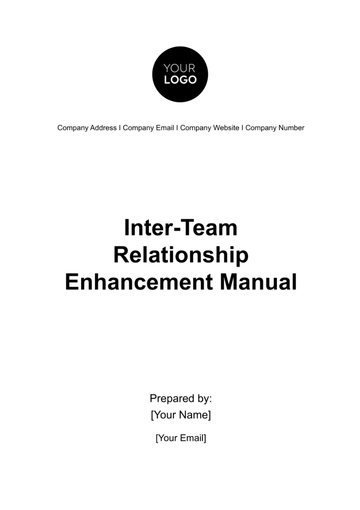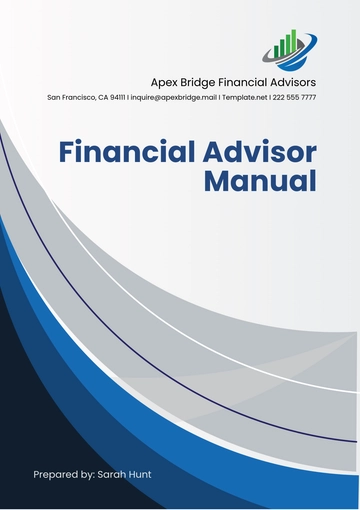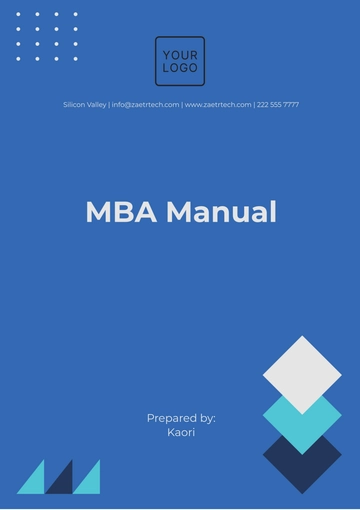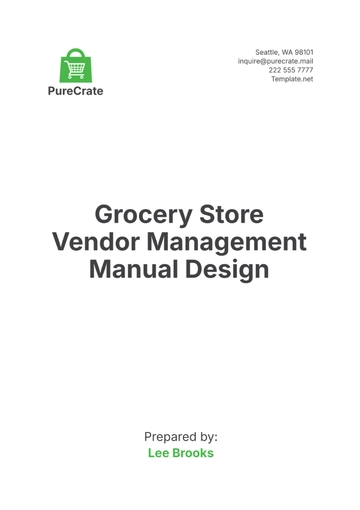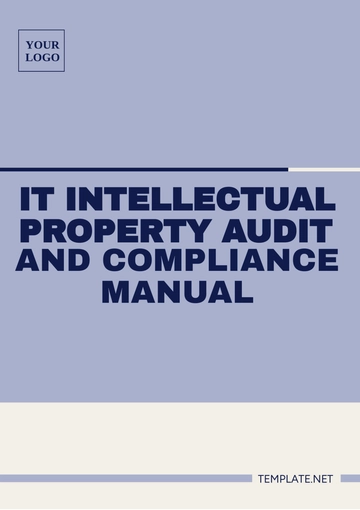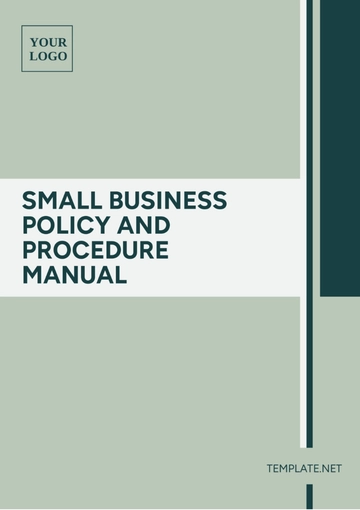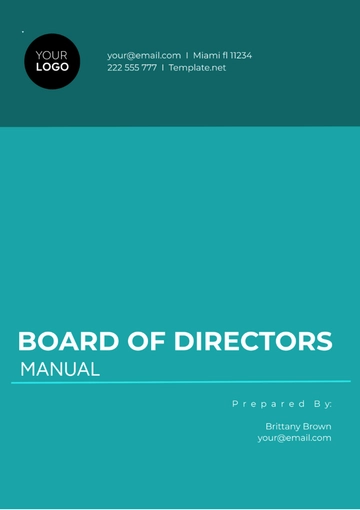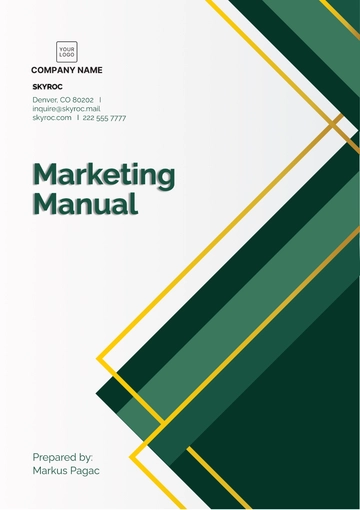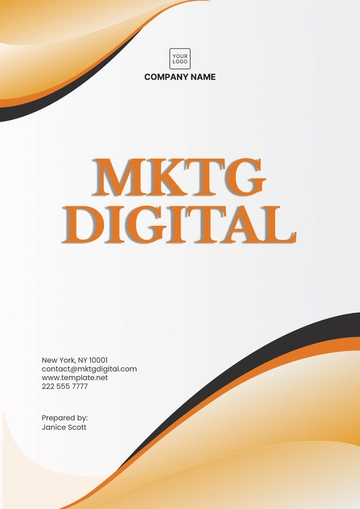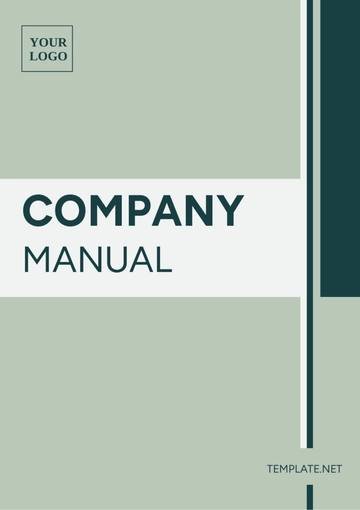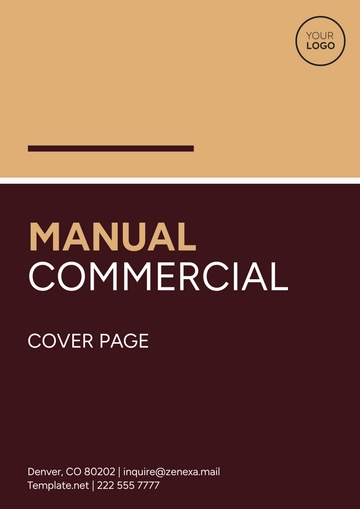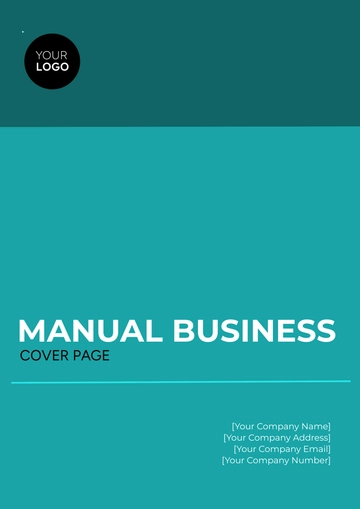Free Finance Receivables Management Manual
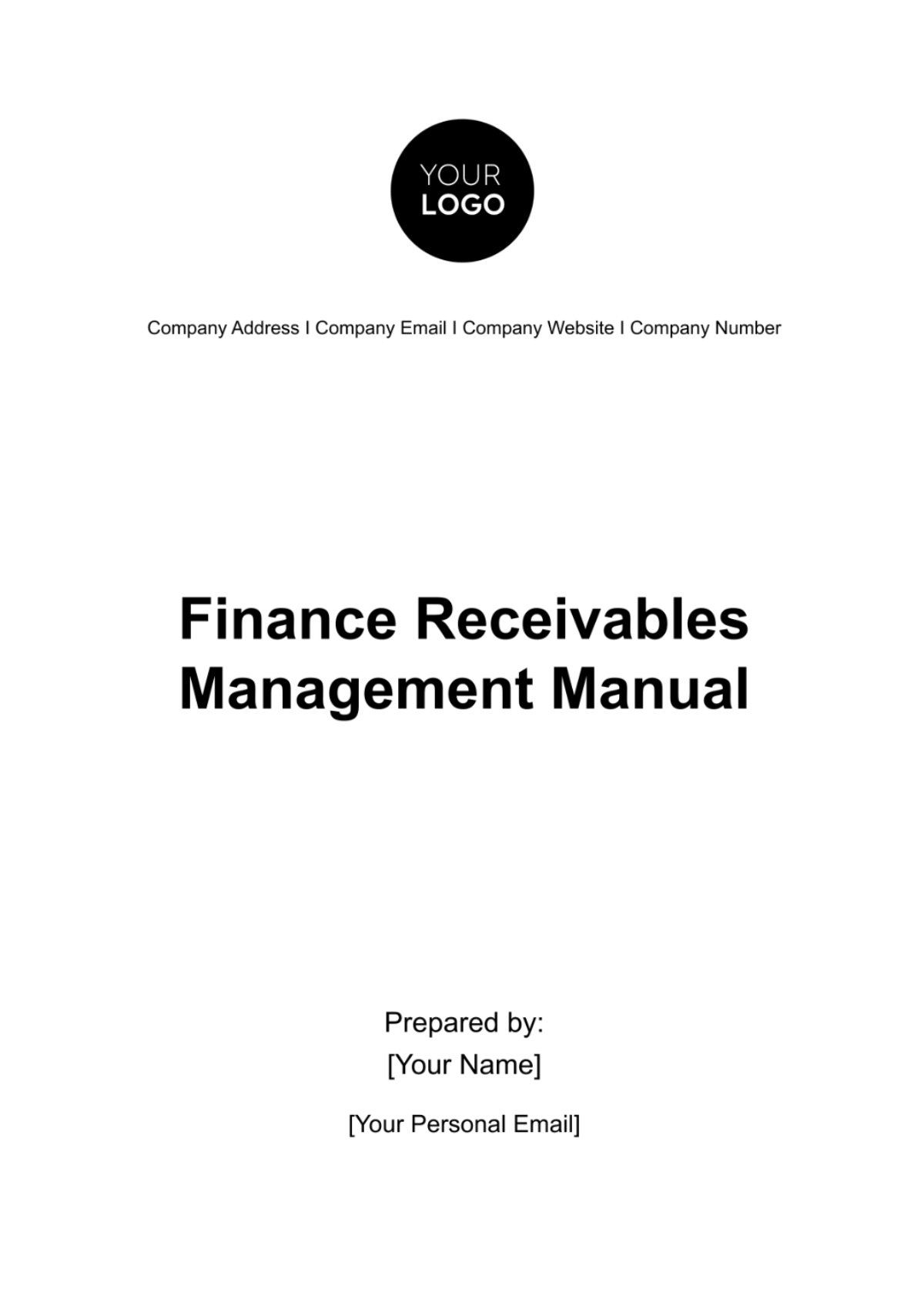
I. Introduction
A. Purpose and Scope
This guide crafted to establish robust procedures and standards for the effective management of finance receivables within our organization. This manual serves as a beacon, illuminating the path to optimal financial health through clear, concise, and systematic receivables management. With a comprehensive scope, it addresses the intricacies of handling promises of payment from our esteemed customers.
B. Target Audience
This manual is designed to cater to a diverse audience within our organization, including finance professionals, credit managers, accounts receivable teams, and any stakeholders involved in the finance receivables management process. Whether you are navigating credit extension criteria, overseeing invoice procedures, or implementing collection strategies, this manual provides valuable insights tailored to meet the needs of various roles involved in the intricate dance of finance receivables.
II. Organizational Overview
In the tapestry of finance receivables management, key personnel play instrumental roles in ensuring a seamless and efficient process. The table below provides a panoramic view of these roles, each carrying unique responsibilities that collectively contribute to the symphony of our financial operations:
Role | Responsibilities |
[Finance Manager] | [Oversee finance receivables strategy and policies] |
Each role is integral, collectively fortifying our ability to navigate the complex terrain of finance receivables with finesse, resilience, and customer-centricity. The Finance Manager is entrusted with overseeing strategy, ensuring alignment with organizational goals. Their collaborative efforts form the foundation of an efficient, transparent, and customer-focused receivables management system.
III. Credit Policies and Procedures
A. Key Factors for Assessment
To guide our stakeholders clearly, we define the factors forming the foundation of our credit extension criteria:
Financial Stability
Assess the financial standing of the customer by considering factors such as profitability, liquidity, and overall financial health.
Payment History
Examine the customer's track record of timely payments and past credit behavior, offering insights into their reliability.
Potential Risks
Identify and evaluate potential risks associated with extending credit, including market conditions, industry risks, and any historical challenges.
B. Approval Process
Navigating the intricacies of credit approval requires a systematic approach. The table below provides a structured overview of the approval processes, offering a detailed guide for our credit management teams.
Our method begins with an initial assessment, conducting a preliminary review of credit applications and supporting documents. Subsequently, an internal review meticulously analyzes financial stability, payment history, and potential risks, guided by the criteria weights established earlier. The documentation check ensures completeness and accuracy, emphasizing the importance of thorough verification. The final decision-making step involves a comprehensive evaluation of all factors, synthesizing internal review findings and documentation to make an informed decision on the credit limit. This systematic process ensures consistency, transparency, and informed decision-making, aligning with our commitment to sound financial practices.
C. Documentation Requirements
Comprehensive documentation serves as the bedrock of our credit evaluation process, and adherence to specific requirements is imperative. To facilitate a thorough and standardized approach, the following guidelines outline the necessary documentation for credit applications:
Financial Statements
Applicants are required to submit detailed financial statements, providing insights into their financial health, stability, and performance.
Credit References
Submission of credit references is essential for a holistic assessment, allowing us to gauge the applicant's creditworthiness through their interactions with other creditors.
Business Plans (if applicable)
For business applicants, a comprehensive business plan may be required to understand the operational strategies, future projections, and overall viability.
Legal Documentation
Depending on the nature of the credit application, relevant legal documentation, such as contracts or agreements, may be necessary to ensure completeness.
Any Other Relevant Paperwork
Applicants should be aware of any additional documentation specific to their situation, ensuring a comprehensive submission that aids in a thorough evaluation process.
IV. Terms and Conditions
A. Payment Terms
The table below illustrates the payment terms, ensuring clarity and consistency in financial transactions:
Due Dates | Accepted Methods | Early Payment Incentives |
30 days from the date of invoice | Credit cards, wire transfers, and checks | 3% discount for payments made within 10 days of invoicing |
By setting a 30-day payment window and offering diverse payment methods, we provide flexibility and convenience for our customers. The early payment incentives, including a 3% discount for prompt settlements, not only encourage financial responsibility but also contribute to positive customer relations. Simultaneously, the late payment penalties, whether percentage-based or fixed, establish accountability and ensure fair consequences for delayed payments. This balanced approach to terms and penalties aligns with our commitment to transparency, reliability, and fostering mutually beneficial financial relationships.
B. Late Payment Penalties
To instill financial discipline and maintain transparency, the following late payment penalty structure is established:
Percentage-Based Penalty
A predetermined percentage, such as 2% of the overdue amount, will be charged as a penalty for each day or week of delay.
Fixed Fee Penalty
Alternatively, a fixed fee, for instance, $20, may be imposed as a penalty for late payments.
C. Early Payment Discounts
Incentivizing early payments is a strategic practice benefiting both parties. This segment outlines the discounts offered for customers settling accounts ahead of schedule:
Percentage-Based Discount
Customers who make payments before the due date may enjoy a predetermined percentage discount, such as 5% off the total invoice amount.
Fixed Amount Discount
Alternatively, an enticing fixed amount discount, like $50, may be applied for early settlements.
V. Invoicing and Documentation
A. Invoicing Procedures
Timely Invoicing
Invoices are generated promptly, within 24 hours of service delivery or product shipment, ensuring accuracy and timely delivery to customers.
Detailed Invoicing
Invoices must provide a detailed breakdown of products or services rendered, including quantities, unit prices, and any applicable taxes or fees.
Customized Invoicing
Tailor invoices to meet specific customer preferences, providing clarity and facilitating streamlined payment processes.
B. Documentation Practices
Document Management System
Implement a robust document management system for storing and organizing all relevant invoicing and transaction documents.
Version Control
Maintain version control for all documents to ensure accuracy and provide a clear audit trail.
Document Accessibility
Ensure accessibility of relevant documents to authorized personnel, facilitating efficient communication and resolution of inquiries.
VI. Collection Strategies
A. Customer Segmentation
High-Risk Category
Assign a risk score to each customer, with those in the high-risk category receiving more frequent communication and stringent collection efforts.
Medium-Risk Category
Moderate-risk customers receive targeted communications, balancing assertiveness with maintaining positive customer relations.
Low-Risk Category
Low-risk customers benefit from regular communication reinforcing our commitment to excellent service, with gentle reminders for any outstanding balances.
B. Communication and Follow-Up
Initial Reminder
Send a friendly reminder to customers with overdue payments within 7 days of the due date, emphasizing collaboration to resolve any issues.
Follow-Up Call
Initiate a follow-up call within 14 days, maintaining professionalism while actively addressing concerns and offering assistance.
Escalation Procedure
If necessary, implement an escalation procedure after 30 days, involving senior management or legal intervention as appropriate.
VII. Monitoring and Reporting
A. Monitoring Receivables
To ensure effective management of receivables, a comprehensive monitoring approach is imperative:
Regular Review
Conduct bi-weekly reviews of outstanding receivables, scrutinizing payment patterns, and identifying potential issues early on.
Ageing Analysis
Perform a detailed ageing analysis, categorizing receivables into 0-30 days, 31-60 days, 61-90 days, and over 90 days. This nuanced approach enables targeted interventions based on the age of the receivables.
B. Reporting Mechanisms
Establishing robust reporting mechanisms is fundamental for transparency and informed decision-making:
Frequency
Monthly reports, distributed to relevant stakeholders, detail the receivables status, including ageing analysis, and highlight trends over time.
Key Metrics
Regularly update key metrics and collection efficiency. This ensures a comprehensive understanding of receivables management effectiveness.
VIII. Continuous Improvement
A. Performance Evaluation
Regularly evaluating the performance of finance receivables management ensures adaptability and improvement:
Key Performance Indicators (KPIs)
Define and track KPIs such as reducing DSO by 10% over the next quarter and maintaining a bad debt ratio below 2%. These quantitative benchmarks provide tangible goals for improvement.
Feedback Mechanism
Establish a comprehensive feedback mechanism involving stakeholders. Conduct quarterly surveys to gather insights, analyze the effectiveness of current strategies, and identify areas for improvement.
B. Adaptation Strategies
Incorporate strategies for adapting to changing business environments:
Market Trends
Regularly assess market trends, adjusting receivables management strategies accordingly. This ensures that our approach aligns with evolving market dynamics, minimizing risks.
Regulatory Compliance
Ensure compliance with evolving financial regulations. Regularly update procedures to align with legal requirements, maintaining integrity and legality in all receivables management practices.
IX. Glossary
Ageing Analysis
A method of categorizing receivables based on the duration since invoicing, typically in intervals such as 0-30 days, 31-60 days, 61-90 days, and over 90 days.
Days Sales Outstanding (DSO)
A key metric for measuring the average number of days it takes for a company to collect payment after a sale has been made.
Document Management System
An organized system for storing and managing documents, ensuring accessibility and version control.
Incentive Programs
Strategies or initiatives designed to motivate customers, such as discounts for early payments, encouraging positive financial behavior.
Key Performance Indicators (KPIs)
Quantifiable metrics used to evaluate the success and efficiency of specific processes or practices.
Payment Terms
Explicitly defined terms specifying the conditions under which a payment is due, including due dates, accepted payment methods, and potential incentives or penalties.
Percentage-Based Penalty
A late payment penalty calculated as a percentage of the overdue amount, providing a proportional consequence for delayed payments.
Receivables
Amounts owed to a company by its customers for goods or services delivered but not yet paid for.
Segmentation
The process of categorizing customers based on factors such as payment history and credit risk, allowing for tailored approaches in collection strategies.
Version Control
A system that manages and tracks changes to documents, ensuring the accuracy and integrity of the information over time.
- 100% Customizable, free editor
- Access 1 Million+ Templates, photo’s & graphics
- Download or share as a template
- Click and replace photos, graphics, text, backgrounds
- Resize, crop, AI write & more
- Access advanced editor
Effortlessly manage receivables with our user-friendly Finance Receivables Management Manual Template from Template.net! This dynamic manual, easily customizable and editable with the intuitive AI Editor Tool, ensures a comprehensive approach. Optimize your receivables strategy with this versatile and compelling template, making it your go-to resource in receivables management. Edit today!
